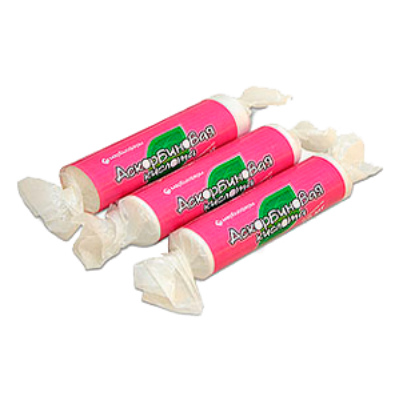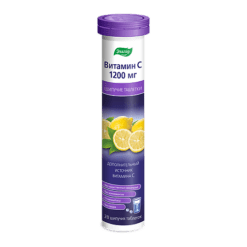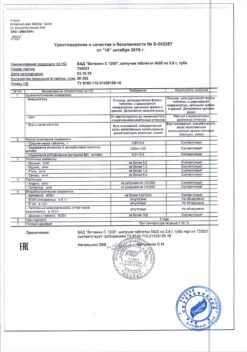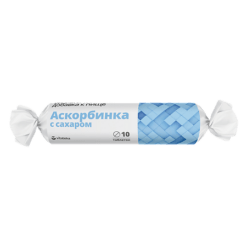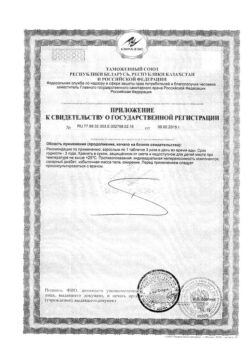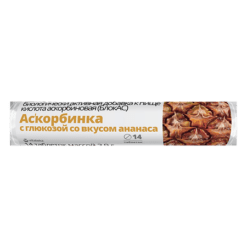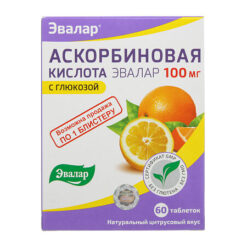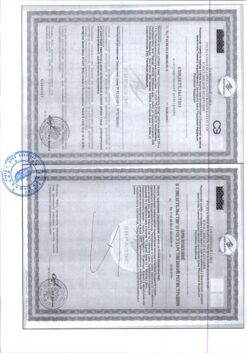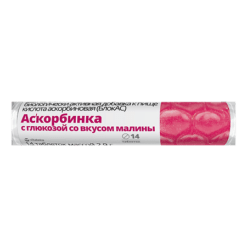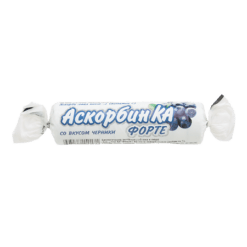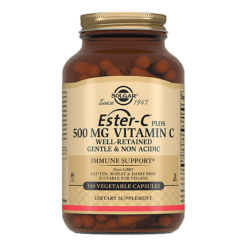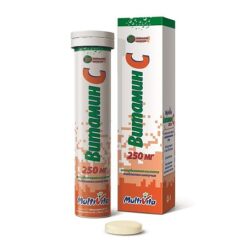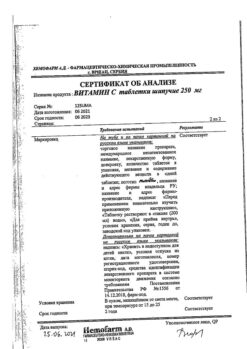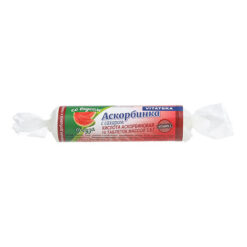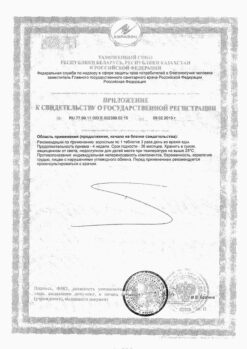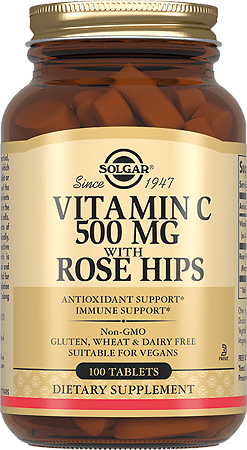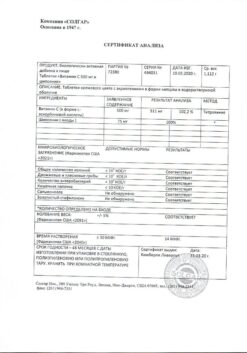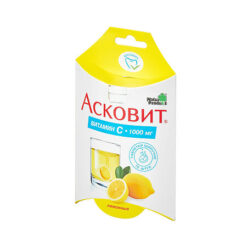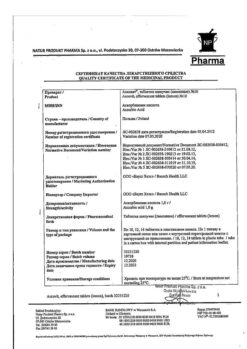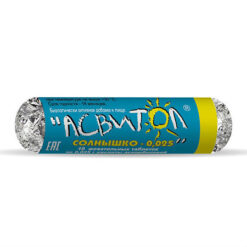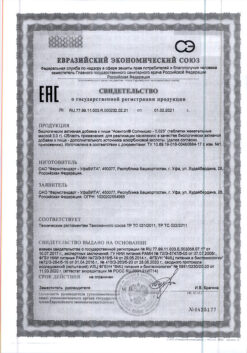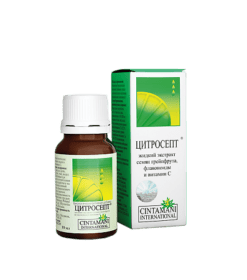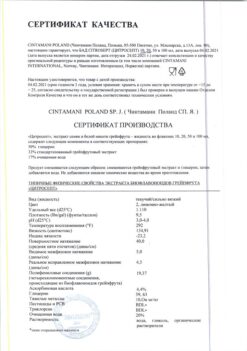No products in the cart.
Ascorbic acid, tablets 50 mg, 10 pcs.
€1.00
Out of stock
(E-mail when Stock is available)
Description
Ascorbic acid has pronounced reducing properties, is involved in the regulation of carbohydrate metabolism, redox processes, blood coagulation, normalization of capillary permeability, tissue regeneration, synthesis of steroid hormones, collagen, procollagen.
Pharmacokinetics
Binding with plasma proteins – 25%. Normal plasma concentration of ascorbic acid is about 10 – 20 µg/ml. It penetrates easily into leukocytes, platelets and then into all tissues; the highest concentration is reached in glandular organs, leukocytes, liver and eye lens; it penetrates through the placenta. The concentration of ascorbic acid in leukocytes and platelets is higher than in erythrocytes and plasma. In deficiency states, the concentration in leukocytes decreases later and more slowly and is considered a better criterion for assessing deficiency than the concentration in plasma.
It is metabolized primarily in the liver to deoxyascorbic acid and then to oxalic acid and ascorbate-2-sulfate.
Indications
Indications
How to take, the dosage
How to take, the dosage
Prescribed by a doctor. Ascorbic acid is prescribed orally (after meals). It is prescribed for preventive purposes in adults 0.05 g – 0.1 g a day, during pregnancy, during postpartum period and in case of low vitamin C content in milk of nursing women – 0.3 g a day during 10-15 days, after that 0.1 g a day during the whole period of lactation. Children are prescribed prophylactically 0.025 g 2-3 times a day. If it is administered orally therapeutic doses for adults are 0.05-0.1 g 3-5 times a day; for children – 0.05-0.1 g 2-3 times a day.
The course of treatment depends on the nature and course of the disease.
Interaction
Interaction
Pharmaceutically incompatible with aminophylline, bleomycin, cefazolin, cefapirin, chlordiazepoxide, estrogens, dextrans, doxapram, erythromycin, methicillin, nafcillin, benzylpenicillin, warfarin.
Enhances blood concentrations of benzylpenicillin and tetracyclines; at a dose of 1 g / day increases the bioavailability of ethinylestradiol (including those included in oral contraceptives). Reduces the effectiveness of heparin and indirect anticoagulants.
Concomitant use with acetylsalicylic acid increases urinary excretion of ascorbic acid and decreases excretion of acetylsalicylic acid.
Induces the risk of crystalluria during treatment with short-acting salicylates and sulfonamides, slows renal excretion of acids, increases excretion of drugs with an alkaline reaction (including alkaloids), reduces the blood concentration of oral contraceptives. Increases total clearance of ethanol, which in turn reduces the concentration of ascorbic acid in the body.
Drugs of the quinoline series, calcium preparations, salicylates, glucocorticosteroids with long-term use deplete ascorbic acid reserves.
In concomitant use reduces the chronotropic effect of isoprenaline.
In long-term use or use in high doses may prevent the interaction of disulfiram and ethanol. In high doses increases excretion of mexiletine by the kidneys. Barbiturates and primidone increase ascorbic acid excretion with urine.
Decreases therapeutic effects of antipsychotic drugs (neuroleptics) – phenothiazine derivatives, tubal reabsorption of amphetamine and tricyclic antidepressants.
Special Instructions
Special Instructions
Because of the stimulating effect of ascorbic acid on the synthesis of corticosteroid hormones, adrenal function and blood pressure should be monitored. High doses of ascorbic acid increase oxalate excretion, contributing to the formation of kidney stones. Newborns whose mothers have taken high doses of ascorbic acid and adults who have taken high doses may experience “ricochet” scurvy. Prolonged use of high doses may suppress pancreatic insular function, so it should be regularly monitored during treatment. In patients with high iron content in the body ascorbic acid should be used in minimal doses. As a reducing agent ascorbic acid may distort the results of various laboratory tests (blood and urine content of glucose, bilirubin, activity of “liver” transaminases and lactate dehydrogenase).
Impact on driving and operating machinery
At the time of treatment, caution should be exercised while driving motor transport and engaging in potentially dangerous activities requiring increased concentration and quick psychomotor reactions.
Contraindications
Contraindications
Hypersensitivity, with long-term use in high doses (more than 500 mg) – diabetes mellitus, hyperoxaluria, nephrolithiasis, hemochromatosis, thalassemia, glucose-6-phosphate dehydrogenase deficiency.
With caution
Sideroblastic anemia, urolithiasis.
Overdose
Overdose
Symptoms: nephrolithiasis, insomnia, irritability, hypoglycemia.
Treatment: symptomatic, forced diuresis.
Additional information
| Conditions of storage | In a place protected from light at a temperature not exceeding 25 ° C |
|---|---|
| Manufacturer | Marbiopharm, Russia |
| Medication form | pills |
| Brand | Marbiopharm |
Other forms…
Related products
Buy Ascorbic acid, tablets 50 mg, 10 pcs. with delivery to USA, UK, Europe and over 120 other countries.

